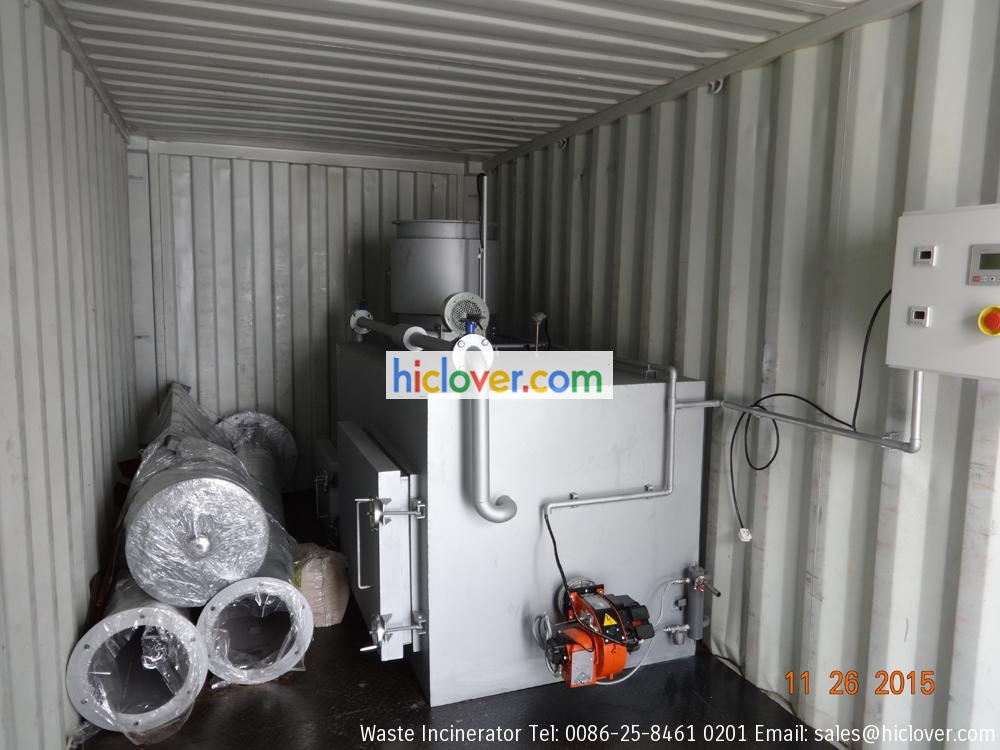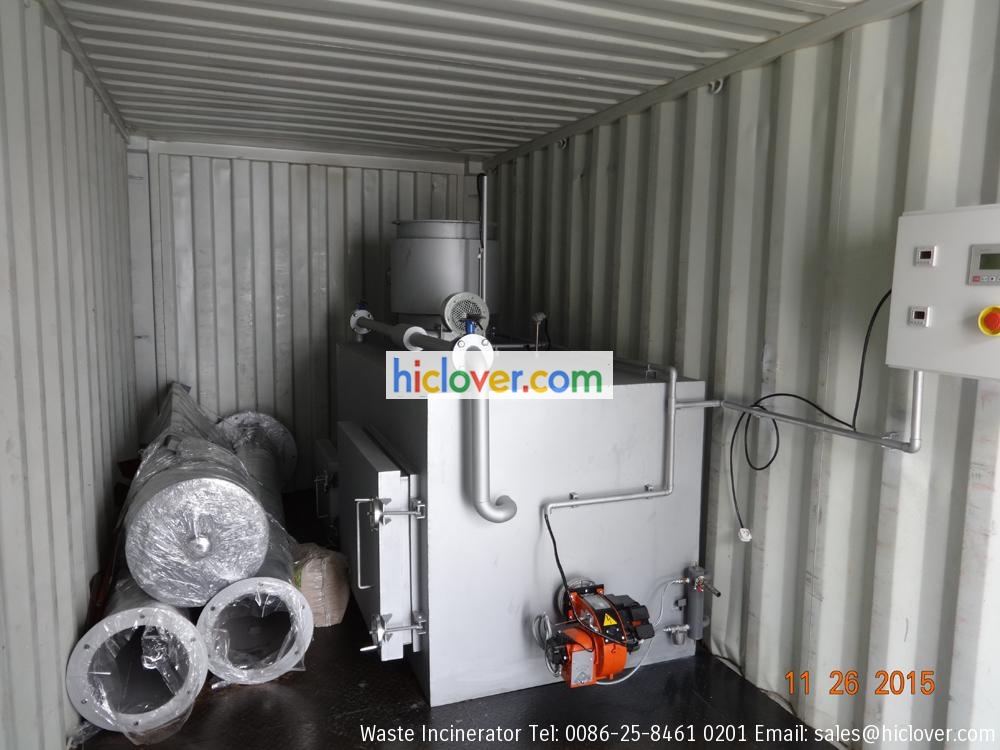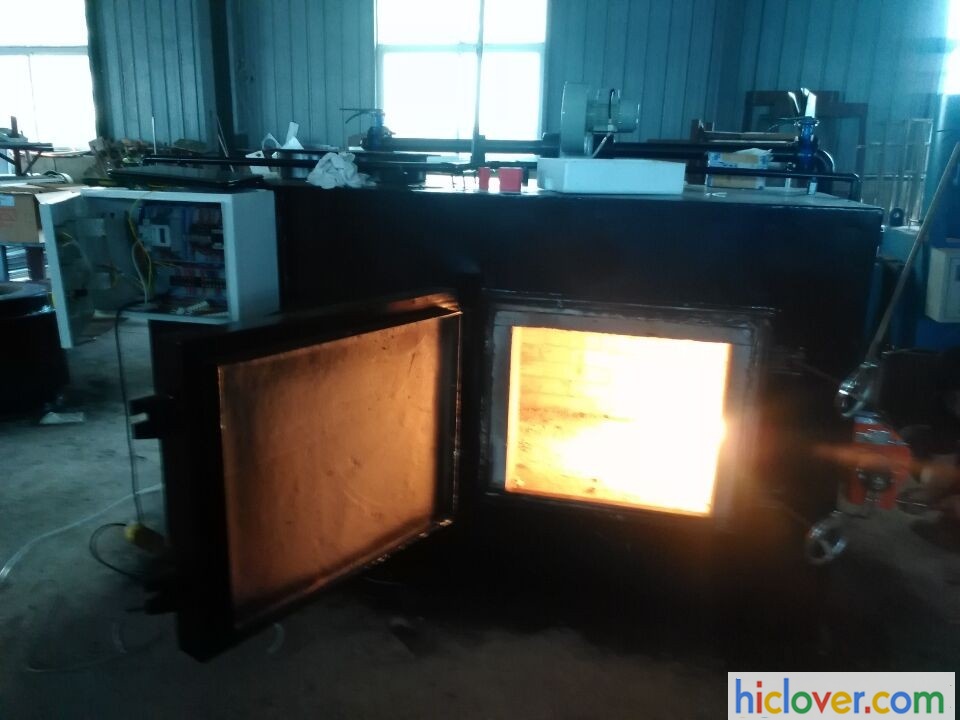Doubel Combustion Chamber
All Incinerators are Doubel Combustion Chamber with One Fuel Burner Each. After Burner Technology for Completely Combustion and Cleaner World.
Read MoreHigh Temperature Incineration
Temperature Range 800 Degree to 1200 Degree in Combustion Chamber. Temperature Thermocouple Monitor and Controller. High Quality Fire Brick and Refactory Cement.
Read MoreGet Lastest News
There are latest incinerator news like technical, public news, business tender for medical waste incinerator,animal incineration, pet cremation
Read MoreNanjing Clover Medical Technology Co.,Ltd.
Email: sales@clover-incinerator.com | Tel: +86-25-8461 0201
Regular model incinerator for market with burning rate from 10kgs to 500kgs per hour and we always proposal customer send us their require details, like waste material, local site fuel and power supply, incinerator operation time, etc, so we can proposal right model or custom made with different structure or dimensions.
Incinerator Model YD-100 is a middle scale incineration machine for many different usage: for a middle hospital sickbed below 500 units, for all small or big size family pets (like Alaskan Malamute Dog), for community Municipal Solid Waste Incineration, etc. The primary combustion chamber volume is 1200Liters (1.2m3) and use diesel oil or natural gas fuel burner original from Italy.
Latest Post
Campaigners welcome Heathrow’s plans to move incinerator
Heathrow Airport has announced plans to move an incinerator away from Stanwell and make a 15 mile ‘green ring’ around town.
The airport said it shifted its plans after residents raised concerns over its plans to relocate its incinerator to the Bedfont Road area.
A Labour county councillor however has said it is like moving bits around a chess board.
Stanwell and Stanwell Moor councillor Robert Evans said:”I welcome very much the changes and that is due to the pressure put on BAA by me and the Labour party.
“But local resident Andrew McLuskey has done all the hard work.
“But in saying that, we are still battling away to stop expansion happening at Heathrow whatsoever.
“There are still serious reservations and I don’t believe an expansion of the airport is perfect for the area or the entire country.
“We’re talking semantics here — it’s a big expansion in a very cramped area. It’s like moving bits around a chess board — whatever we don’t like about Stanwell will be just as massive someplace else.”
A new park and an all-weather sports pitch has been mooted for the area, in addition to the potential construction of’balancing ponds’ to help control the discharge of floodwater.
Roberto Tambini, chief executive of Spelthorne Borough Council, said:”We’re thrilled that Heathrow has listened to and acted upon our feedback in creating its upgraded expansion plans and that the residents of Spelthorne have been provided a better deal consequently.
Some of the 16 billion of private money being invested will also be utilized to encourage the Environment Agency in developing flood prevention schemes to protect homes and property in the surrounding areas.
The airport has also announced plans to fund a new bypass to replace the existing A3044 at Colnbrook and Poyle to alleviate congestion difficulties.
John Holland-Kaye, chief executive of Heathrow said:”The growth of Heathrow can bring significant benefits for local individuals in addition to the UK economy.
“Along with bringing 50,000 new jobs and 10,000 apprenticeships, we can also improve the environmental landscape around the airport and mitigate some of today’s problems including road congestion and flood. We continue to improve our plans based on the feedback we get.”
The Airports Commission is currently assessing the case for growth of Heathrow or Gatwick.
“As well as bringing 50,000 new jobs and 10,000 apprenticeships, we can also improve the environmental landscape around the airport and mitigate some of today’s problems including road congestion and flooding. We continue to improve our plans based on the feedback we receive.”
The Airports Commission is currently assessing the case for expansion of either Heathrow or Gatwick.
Supply, Installation and Commissioning of DIESEL FIRED INCINERATORS

Medical Waste Incinerator, 100 to 120 Kg/hr
Application For incineration, general and pathological
Capacity 100 C 120 kg/h burn rate
Type Two combustion chambers type; primary and Secondary, controlled/forced combustion air type with a flue gas emission scrubbing unit
Operating time Minimum 8 hours daily
Operating temperature From 850 0C to 1200 0C, Automatic controlled
Residual Ash 5 to 10%
Construction Constructed from heavy duty mild or aluminized steel
Or equal and approved equivalent

Insulation material Refractory material lining similar or equal to calcium
Silicate and hot face combination of heavy duty brickwork
Internal Construction Fixed hearth type complete with gratings, concave bottom and charging door, lined with refractory material
Charging Door Suitable for manual loading of wastes and with smooth
Dear seal equivalent of Ceramic seals with hinges.
Door Lock Automatic, Electric type
Ash removal door Provided, for removing resultant bottom ash leftovers from the Primary chamber
Gratings Provided
Loading Manual loading of waste
Primary Burner Fully automatic, with fuel, temperature and speed controls with ignition system flame detector Air fan Complete with safety features, flame failure Diesel fired fuel injector type
Flange mounted
Blower Provided. 3 phase for supplying excess combustion air through the distribution system with speed control system
Temperature Minimum exit 850 0C
Observation port To be provided with protective glass type
3.3 Secondary chamber
Tinian solid waste: Where to go?
The Marine Forces Pacific recently held an ad hoc committee meeting with the Bureau of Environmental and Coastal Quality, Environmental Protection Agency, Tinian Mayor’s Office, Department of Public Works and Administration agents in the BECQ office on Middle Road to map out the instructions to take about the potential solid waste solutions beneficial for both the military and the civilian population.
In analyzing these options, the U.S. military held the assumption that the current dumpsite located at Puntan Diablo on Tinian — the area where the Chinese group of investors will develop into an integrated resort — will be closed and that a transfer station is being contemplated.
MARFORPAC environmental specialist Sherri Eng said the dumpsite isn’t something that the military will have the ability to use.
Just by looking at the requirements and the advantages of the options explored, Eng stated that the easiest would be the off-island disposal.”
In choosing the off-island disposal option, the parties will need to research the capacity of the Marpi landfill to accommodate the waste coming from Tinian — both civilian and military waste.
Eng, in a meeting with the community regulatory agencies and officials walked them through the three systems being contemplated.
Choice 1: Incineration
Eng said the system which calls for using incinerator or waste-to-energy system requires a”properly sized incinerator,” fenced website, ash landfill, wastewater disposal, trained operators and secondary disposal site for C&D or construction and demolition waste, green waste, recyclables and white products.
She stated that this system could cause significant waste reduction and energy production.
However, there are challenges to be met: siting and permitting, maintaining consistent operations, the requirement for sorting and waste tracking, high initial cost, high maintenance cost and long timeline for construction.
“Construction timeline is long. It’s not something which we can install tomorrow,” said Eng.
Department of Public Works Secretary Martin C. Sablan mentioned about the CNMI getting an incinerator which it never used because of the difficulty of allowing through the regulatory agencies.
“Permitting was a problem,” said Sablan.
Choice 2: Fukuoka Landfill
The Fukuoka landfill is a new approach to managing solid waste. It’s a semi-aerobic landfill with a leachate collecting pipe setup in the landfill floor that drains the leachate to a treatment facility.
This method does not require a synthetic liner.
However, if this were to be chased, Tinian will require an additional 15 hectares and using specific construction material.
The MARFORPAC agents said they have conducted research on this method.
It had been done in Palau, Yap and American Samoa but nowhere else in the continental United States because of allowing.
“We must find some type of waiver,” said Eng mentioning that it is not a permitted system from the U.S.
But with Fukuoka method, there’s a potential to convert the present dumpsite on Tinian.
As for leachate, the military is considering to upsize its waste water treatment facility to accommodate this if this were the choice to take into account.
Since the Fukuoka landfill will require clay, Eng said their research showed the lack of the material on Tinian; however, it was indicated there is a supply in Papago.
Choice 3: Off-island disposal
This option proposes to utilize the present Marpi landfill.
She said that this centralizes waste management system on Saipan.
But Eng was quick to point out that among the challenges will be how to deal with the perception that Saipan becomes a dumping ground.
The military also sees the need to upgrade shipping infrastructure.
“We’re willing to accept military waste,” said DPW Secretary Martin C. Sablan.
He said they had excavated the ground to build the next cell of the landfill facility.
With this choice, Eng assured that”whatever we do, we’re going to take the Tinian waste with us.”
Asked by DPW when the military were to foot the bill for shipping and transport of the waste, Eng said,”We agree to discover the solution and expect to find the solution.” She said she could not commit to anything.
Sablan said it will cost less for the military to bring their waste to Saipan but the municipality will be requiring help.
Feasibility study for three options?
Eng remarked that the options has to be brought down to 2.
“I don’t believe we have the time and money to do all three,” she said.
Transfer station is key
since they mulled the potential solutions to Tinian’s solid waste issues, Eng said it is assumed that there will be a transfer station.
“Transfer station is important in these sytems,” she said.
Closure of the dumpsite
Tinian Mayor Ramon M. Dela Cruz pointed out that It’s not the responsibility of the developer to close the existing dumpsite in Puntan Diablo.
He, however, said that Alter City has committed to providing around $5 million in support.
Mayor Dela Cruz said three years would be reasonable.
“That will allow the developer to work on the adjacent property,” he said.
Alter City Group is proposing to build a golf course in the current site of the dumpsite.
Alter City committed to help
In a hearing before the CNMI legislature last week, Alter City’s legal counsel Rober Torres stated,”Investor is motivated to help in its removal.”
“That will allow the developer to work on the adjacent property,” he said.
Alter City Group is proposing to build a golf course at the current site of the dumpsite.
Alter City committed to assist
At a hearing before the CNMI legislature last week, Alter City’s legal counsel Rober Torres said, “Investor is motivated to assist in its removal.”
But he said the government too has to pitch in.
by: http://www.mvariety.com/special-features/business-edge/70491-tinian-solid-waste-where-to-go
New Metro incinerator would cost $1.3 billion more than planned: study
Metro Vancouver is taking more heat over its plan to build a second garbage incinerator, with a new study commissioned by waste company Belkorp Environmental Services suggesting the move could cost up to $1.3 billion more than originally estimated.
The analysis, conducted by ICF International on behalf of Belkorp, comes as Metro Vancouver attempts to deal with the province’s rejection of its proposed Bylaw 280, which was integral to its solid waste management plan because it would have ensured garbage generated in Metro was kept in the region.
Belkorp, which runs the Cache Creek dump, has been involved in a high-profile lobbying campaign against Bylaw 280 as well as Metro Vancouver’s plans to burn the region’s waste rather than landfill it. Metro is slated to close the Cache Creek dump in 2016.
“We’re still fighting for options that are better than the incinerator,” said Russ Black, Belkorp’s vice-president of corporate development. “Irrespective of Bylaw 280, we still wanted to show the true costs of the incinerator.”
The report, by ICF’s lead author Seth Hulkower, suggests Metro Vancouver significantly overestimated the revenue it would earn by selling electricity from the new incinerator to BC Hydro over a period of 35 years.
Metro had suggested it would seek to negotiate a price of $100 per kilowatt hour from BC Hydro, but Hulkower noted the waste-to-energy business plan doesn’t take into account that BC Hydro may adjust the price it pays for electricity after Metro recovers it capital outlay on the project.
Metro Vancouver chairman Greg Moore said he’s not surprised with the study’s findings, saying it’s a point that has long been argued by Belkorp.
But he said the analysis is premature considering that Metro has at least 10 proponents offering different forms of waste-to-energy, including district heat and gasification, and there are several potential scenarios.
“They don’t know anything about what we’re doing in our (request-for-proposals) process … all of them are not based on selling to Hydro,” Moore said.
He added Metro has experience running a waste-to-energy plant, having done so in Burnaby since 1988, while Belkorp is interested in setting up multi-material recovery facilities and ensuring the dump continues to operate.
“They are relentless in pursuit of their agenda to continue to have garbage going to their landfill,” Moore said. “Until that decision is made I don’t think they’ll stop.”
Belkorp already has a Coquitlam site where it proposes to build a facility to take a “last pass” at waste to remove recyclables such as organics, paper, plastics and metals, a move that would ultimately rob the region of enough material to fuel another waste-to-energy facility.
Black acknowledged multi-material recovery facilities directly compete with incinerators but say they make sense. “When you look at the range of costs, there’s some serious questions that have to be addressed,” he said.















